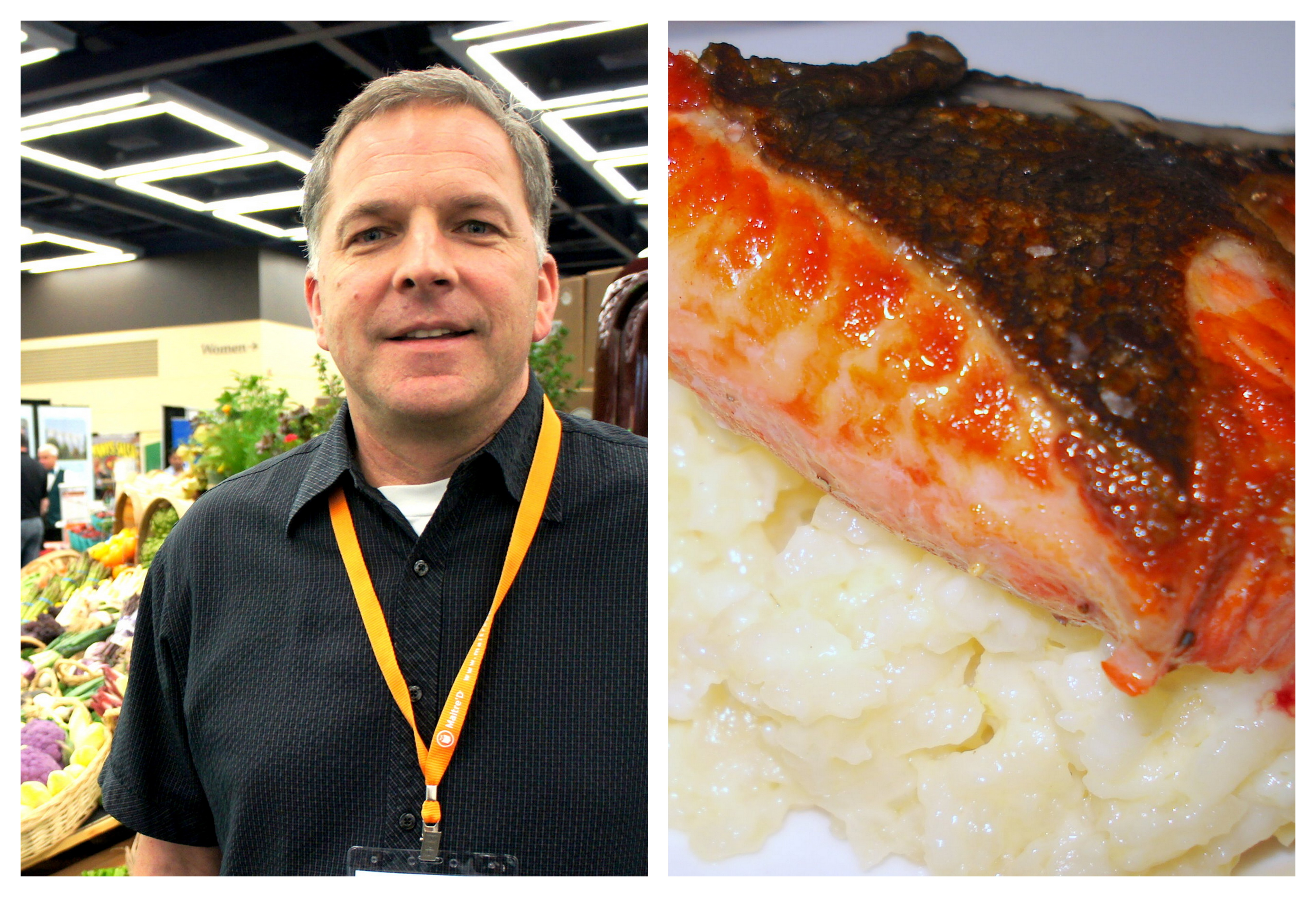 The future may be hiding in plain sight, in a 100,000-square-foort warehouse in the Kent Valley south of Seattle. That’s where an outfit called Plenty is growing hundreds of varieties of produce in 20-foot tall towers. The climate-controlled facility uses LED lights to simulate sunshine but does not use pesticides, herbicides, synthetic fertilizers, or GMOs.
The future may be hiding in plain sight, in a 100,000-square-foort warehouse in the Kent Valley south of Seattle. That’s where an outfit called Plenty is growing hundreds of varieties of produce in 20-foot tall towers. The climate-controlled facility uses LED lights to simulate sunshine but does not use pesticides, herbicides, synthetic fertilizers, or GMOs.
This Dr. Strangelove system uses thousands of infrared cameras and sensors to collect data in the farms, which is then analyzed using machine learning to optimize how the plants grow. The first plant was built in San Francisco in 2013, the second in Kent four years later.
Plenty says that its technology can achieve yields up to 350 times greater than traditional agriculture, yet uses one percent of the water and barely any land compared to conventional methods. Plenty’s farms can also grow plants — up to 300 variants of produce — year-round, regardless of season, which helps increase efficiency. Its proximity to cities also means that produce doesn’t sit in trucks for days or weeks before ultimately arriving on your kitchen table.
The Kent facility alone is expected to grow 4.5 million pounds of greens annually, which is enough to feed almost 200,000 people. To date, Plenty has raised over $200 million, some of which came from Amazon’s Jeff Bezos.
[As it happens, the Washington Post this morning “discovers” the same thing happening in Ohio. The report is here.]
Plenty’s CEO explained that he picked Seattle, in part, because it was the West Coast’s “best example of a large community of people who really don’t have much access to any fresh fruits and vegetables grown locally.” Well, that’s certainly untrue, a slap in the face to outfits like Tilth that advocate for local farmers. Meantime, we’re still looking for that first head of lettuce from Plenty. A spokesman says “later this year.”
Indoor agriculture, or vertical farming, as it’s also known, could well be the solution to feeding our teeming cities. You can easily conjure up visions of urban farms built into office complexes and high-rises housing developments. Alongside the requisite shafts for elevators, there would be an indoor silo for microgreens, another for romaine.
 You may have seen this thing down at the Pike Place Market. It looks like an overgrown ice machine at a chain hotel, with a big green tank attached. It’s called the
You may have seen this thing down at the Pike Place Market. It looks like an overgrown ice machine at a chain hotel, with a big green tank attached. It’s called the  Just as we marvel that it’s been 55 years since MLK’s March on Washington, we reflect as well on the unspeakable that took place across Germany 80 years ago.
Just as we marvel that it’s been 55 years since MLK’s March on Washington, we reflect as well on the unspeakable that took place across Germany 80 years ago. Le Pichet, the French café on First Avenue, owes a lot of its charm to the neighborhood bistros of Paris, but perhaps even more to the informal bouchons of Lyon, where workmen gather noon and night to eat hearty plates of pork sausage, pike quenelles and beef tripe in side-street storefronts that once housed stables and made themselves known by hanging a bundle of brush—known locally as a bouchon, which means cork in Bordeaux and Burgundy. No corks at a bouchon in Lyon, however; the wine comes straight from the cask. Chicken livers are also on the menu, not as a mousse or pâté but puréed and baked and served with tomato sauce. Paul Bocuse, the towering Lyon chef who reinvented French gastronomy, has a highly refined version, gâteau de foies blonds de volaille de Bresse, sauce écrevisse that’s served warm, with a delicate sauce of crayfish.
Le Pichet, the French café on First Avenue, owes a lot of its charm to the neighborhood bistros of Paris, but perhaps even more to the informal bouchons of Lyon, where workmen gather noon and night to eat hearty plates of pork sausage, pike quenelles and beef tripe in side-street storefronts that once housed stables and made themselves known by hanging a bundle of brush—known locally as a bouchon, which means cork in Bordeaux and Burgundy. No corks at a bouchon in Lyon, however; the wine comes straight from the cask. Chicken livers are also on the menu, not as a mousse or pâté but puréed and baked and served with tomato sauce. Paul Bocuse, the towering Lyon chef who reinvented French gastronomy, has a highly refined version, gâteau de foies blonds de volaille de Bresse, sauce écrevisse that’s served warm, with a delicate sauce of crayfish.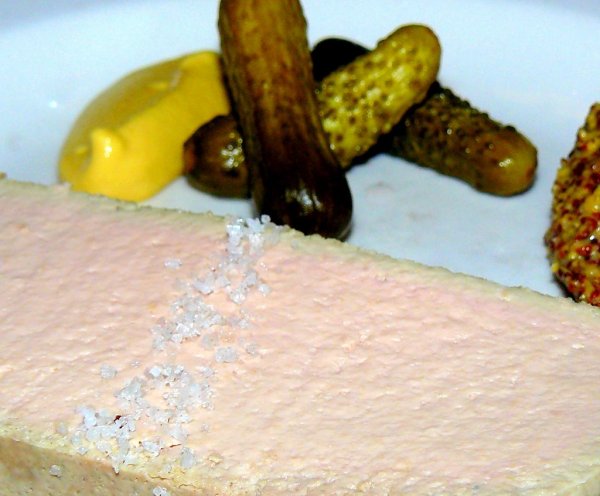 The chicken livers (free range chickens, naturally) are delivered by Corfini Gourmet, a classy restaurant supply house. Poached, then emulsified and blended with cream, eggs and a Madeira reduction. Seasoned with orange peel, thyme, clove and allspice, the whole thing strained through a fine sieve to remove the fibrous bits. Then it’s baked, like a terrine, in a bain-marie, unmolded, and served chilled: a thick, four and a half-ounce slice, topped with a line of gros sel that provides crunch as much as saltiness. At Le Pichet, the garnish is cornichons and two kinds of mustard; at its sister restaurant, Café Presse on Capitol Hill, it’s served with a cherry compote.
The chicken livers (free range chickens, naturally) are delivered by Corfini Gourmet, a classy restaurant supply house. Poached, then emulsified and blended with cream, eggs and a Madeira reduction. Seasoned with orange peel, thyme, clove and allspice, the whole thing strained through a fine sieve to remove the fibrous bits. Then it’s baked, like a terrine, in a bain-marie, unmolded, and served chilled: a thick, four and a half-ounce slice, topped with a line of gros sel that provides crunch as much as saltiness. At Le Pichet, the garnish is cornichons and two kinds of mustard; at its sister restaurant, Café Presse on Capitol Hill, it’s served with a cherry compote.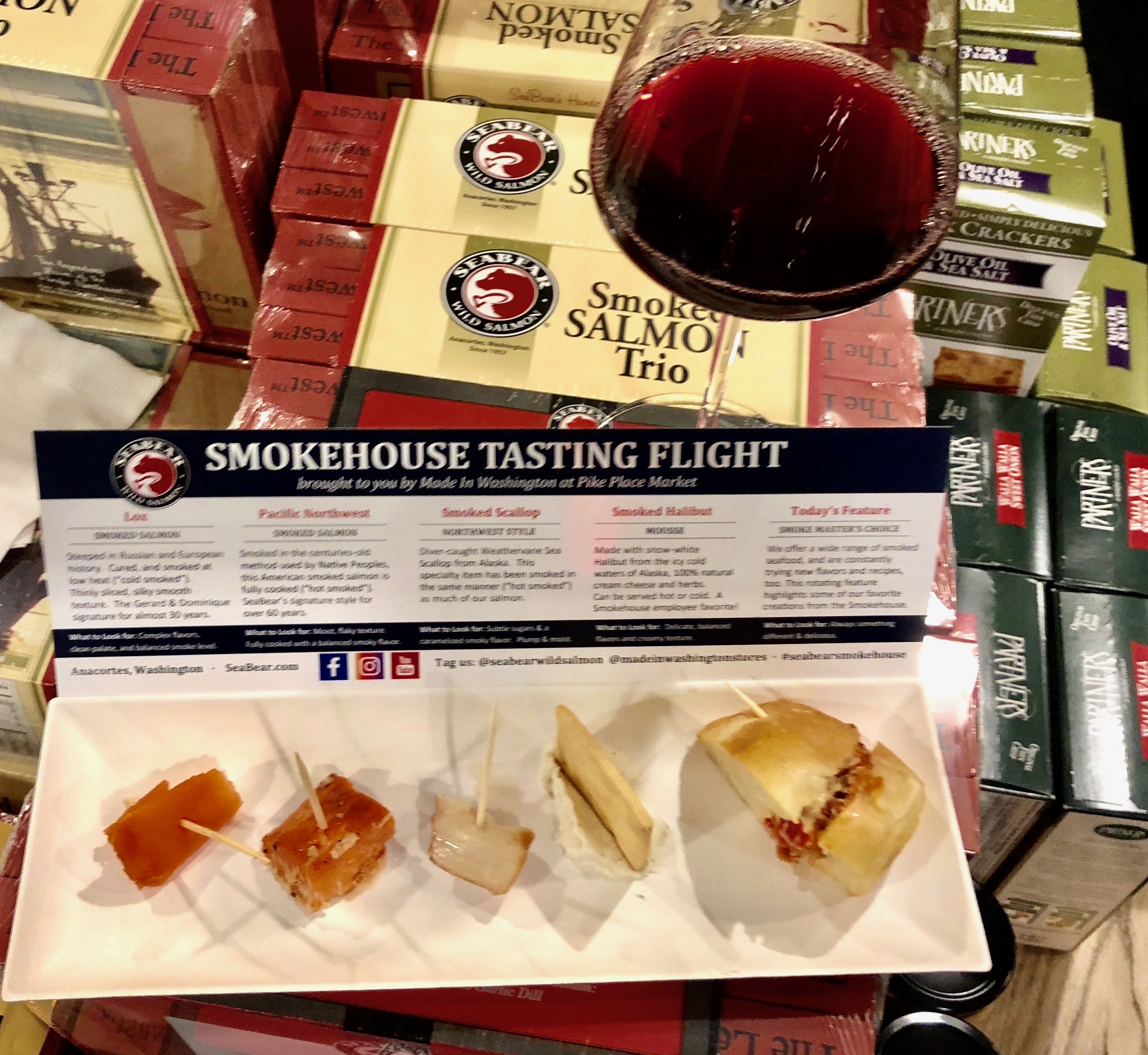
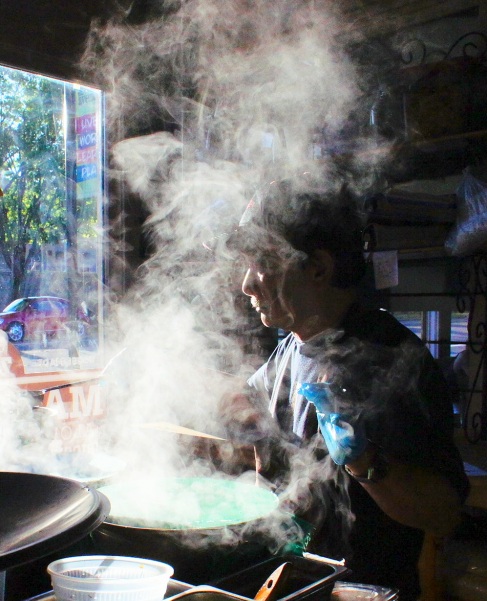
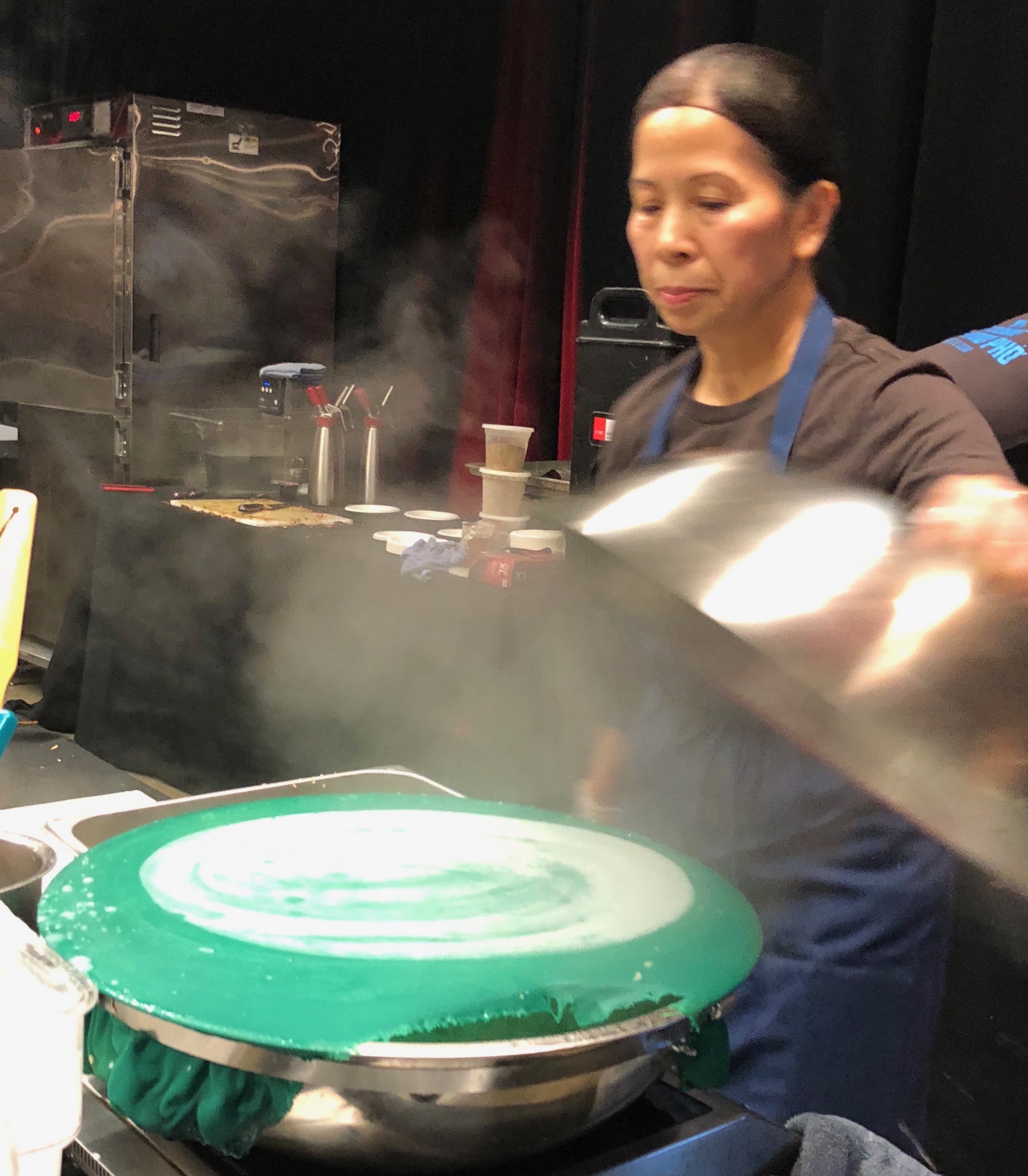 a slurry. (“Rice only; cornstarch is cheating!” he says.) He steams a ladle of the (slightly fermented) batter on a cloth stretched across a of pot of steaming water. Taken off too soon, they fall apart; left on too long, they become chewy.
a slurry. (“Rice only; cornstarch is cheating!” he says.) He steams a ladle of the (slightly fermented) batter on a cloth stretched across a of pot of steaming water. Taken off too soon, they fall apart; left on too long, they become chewy.